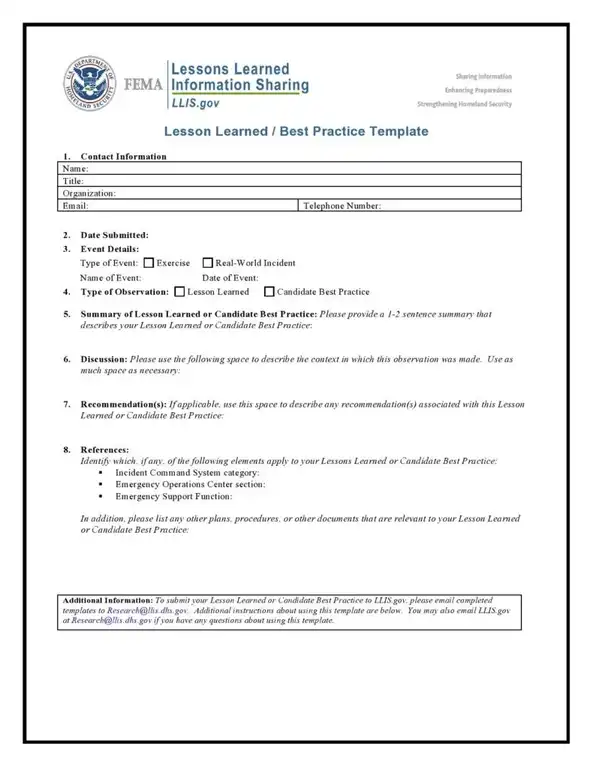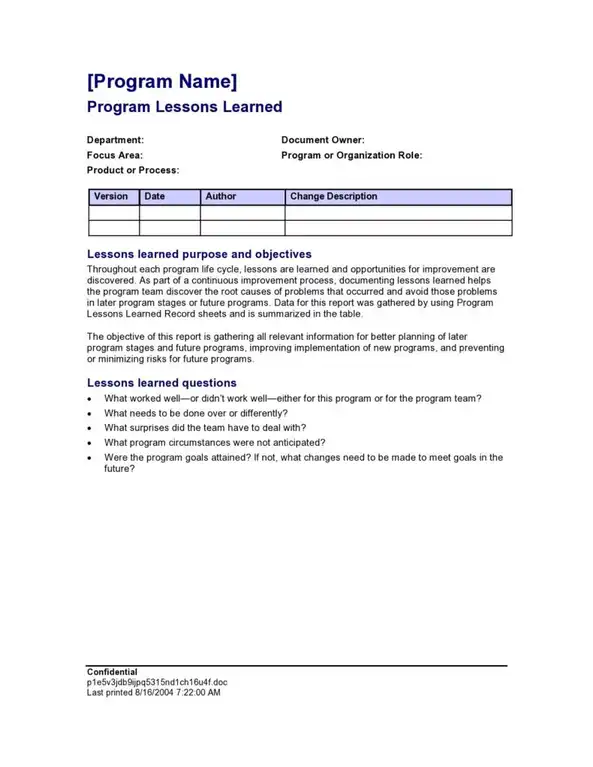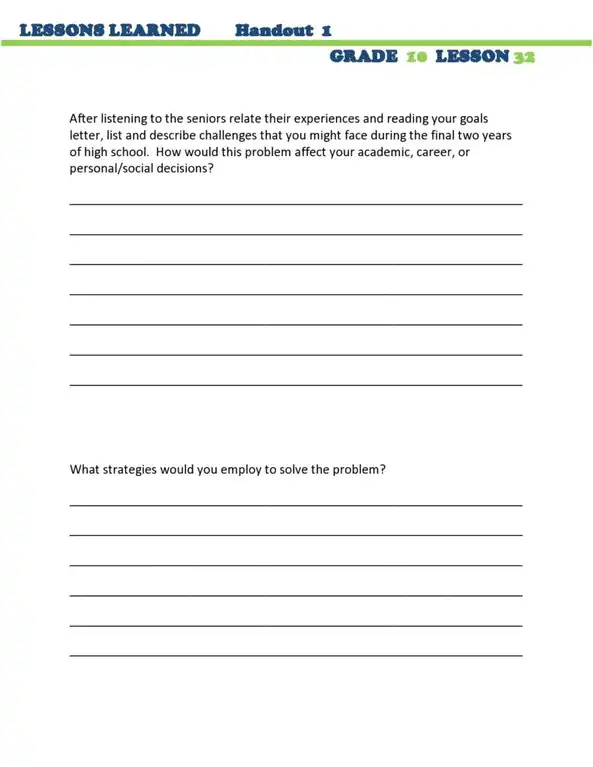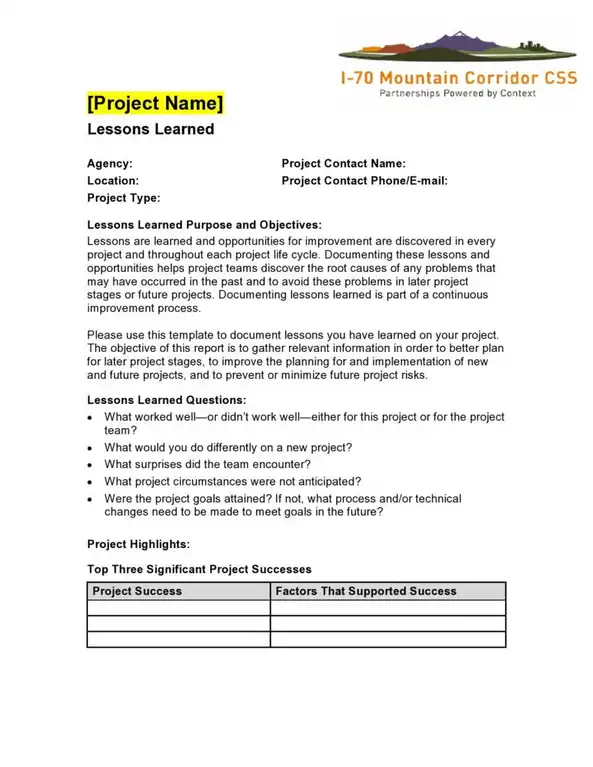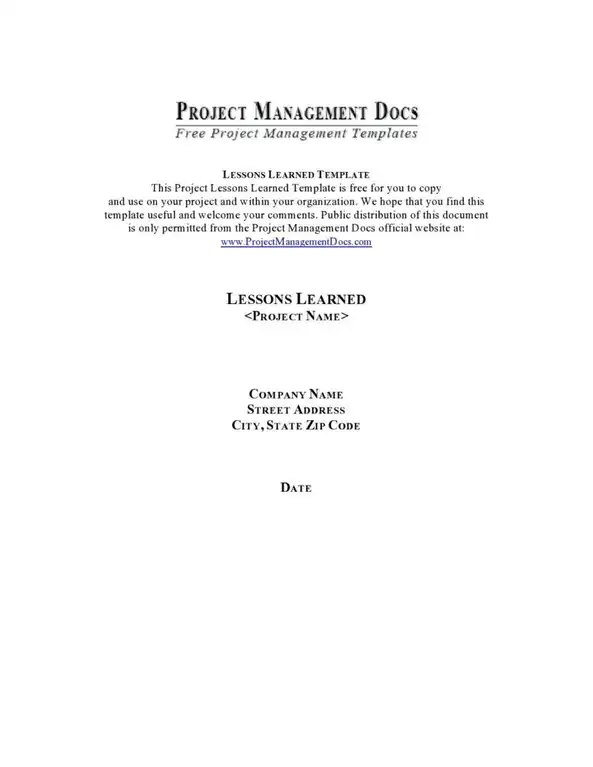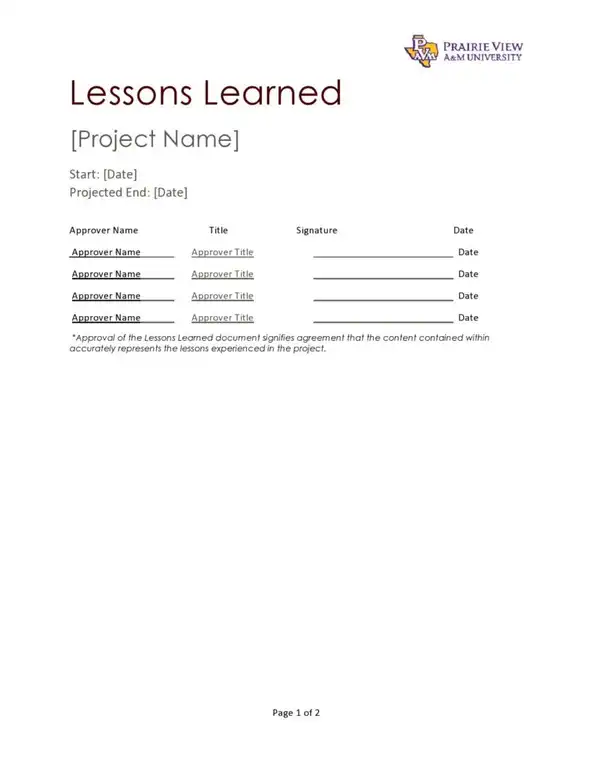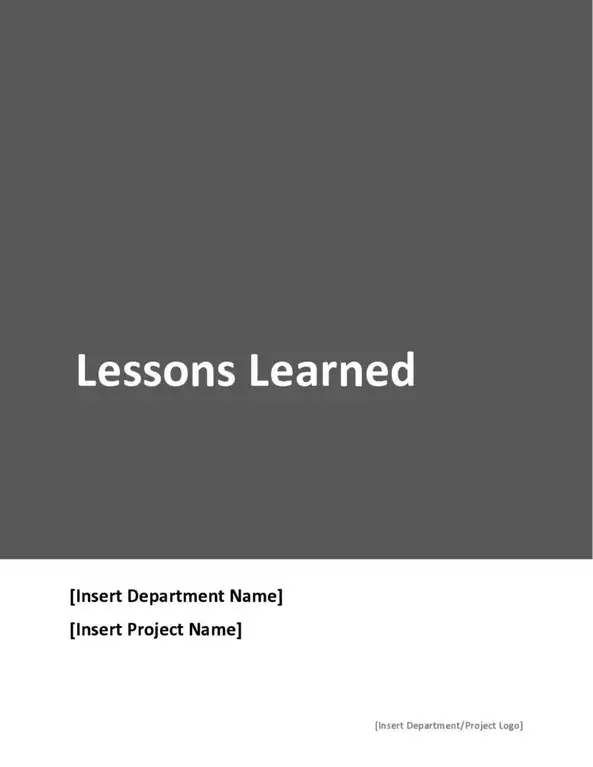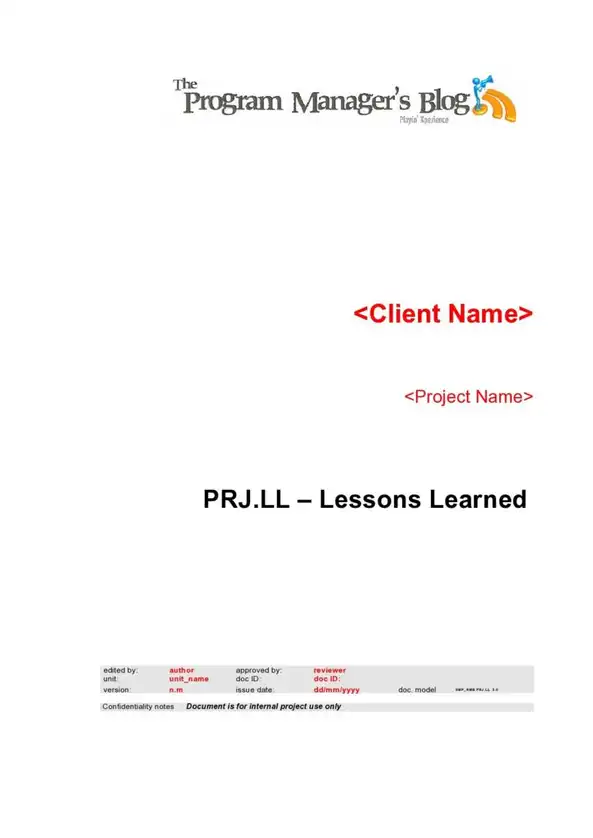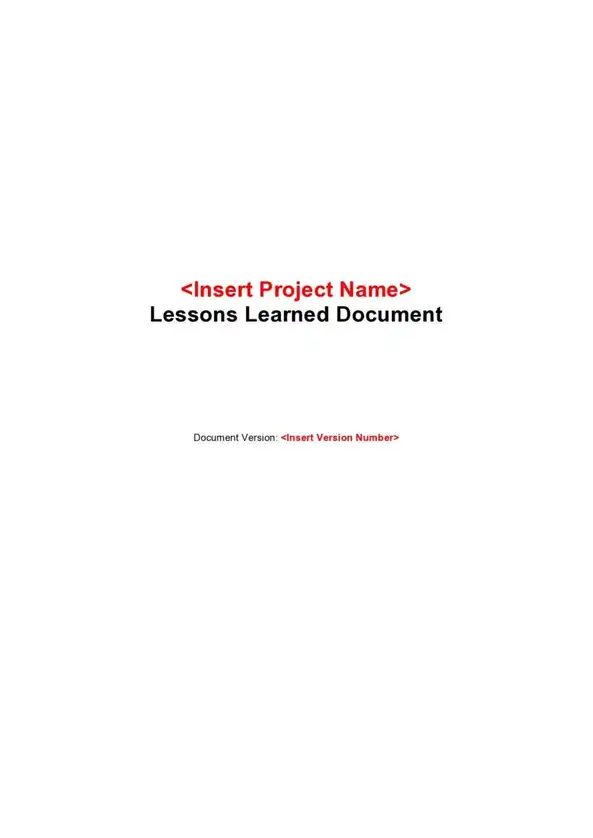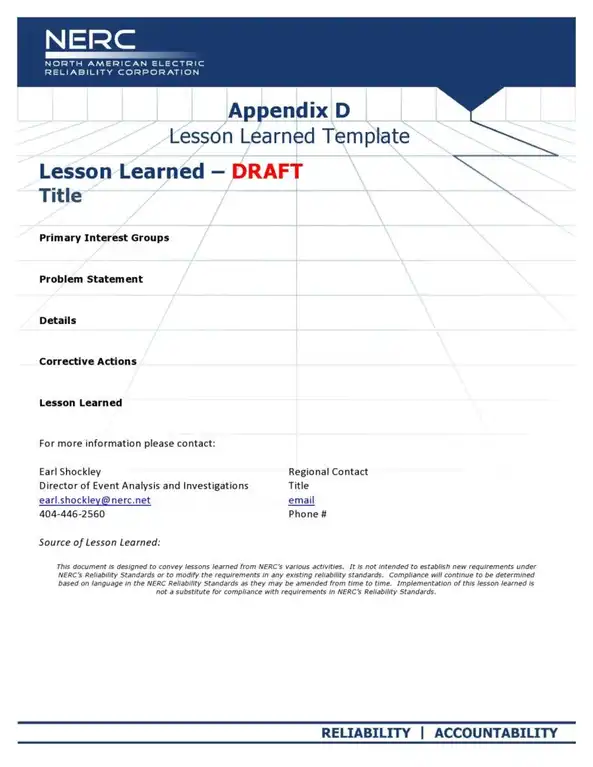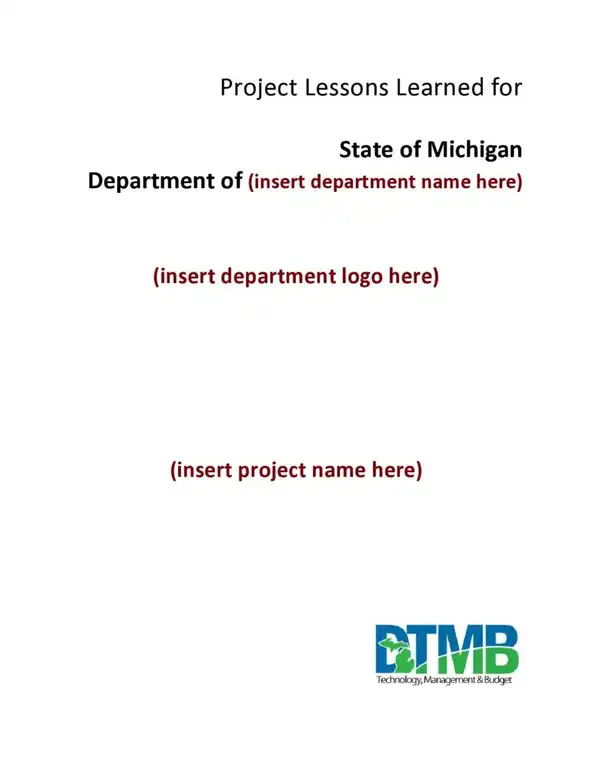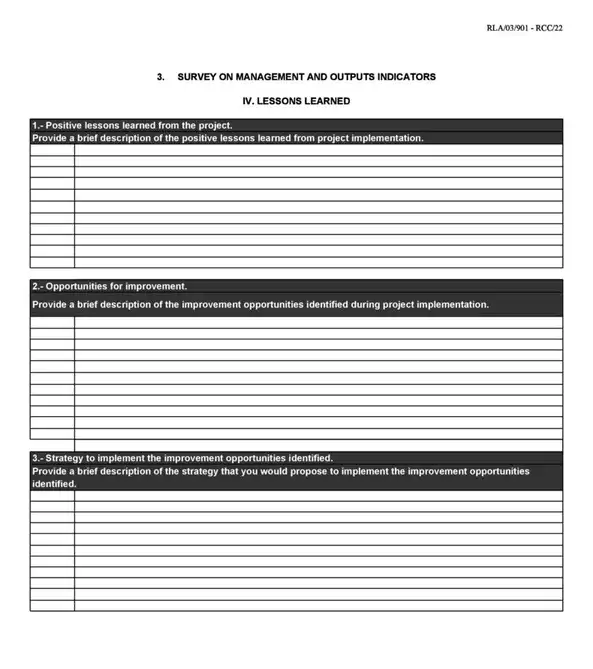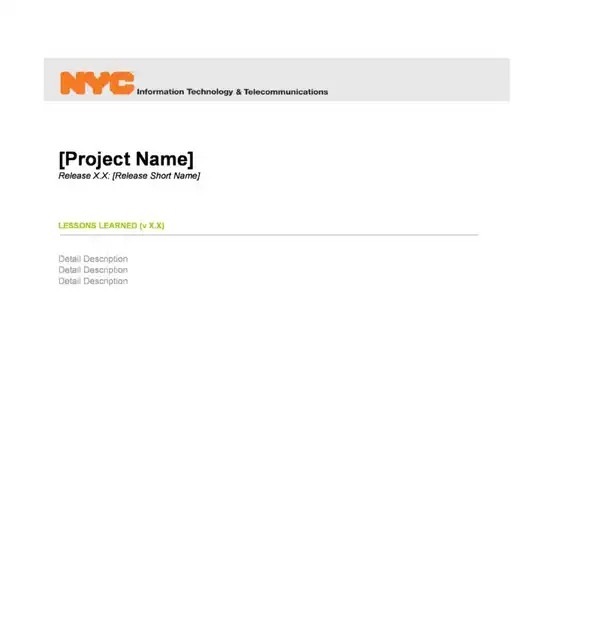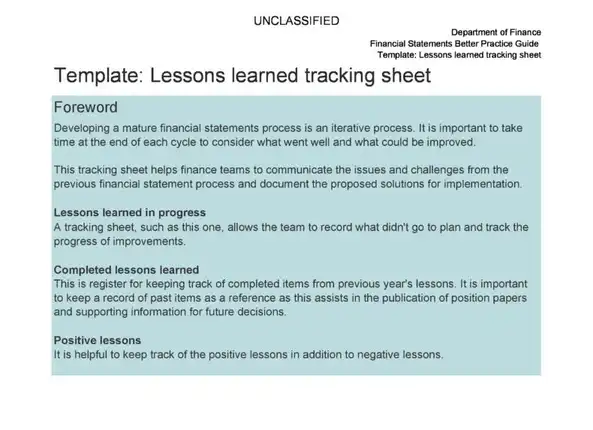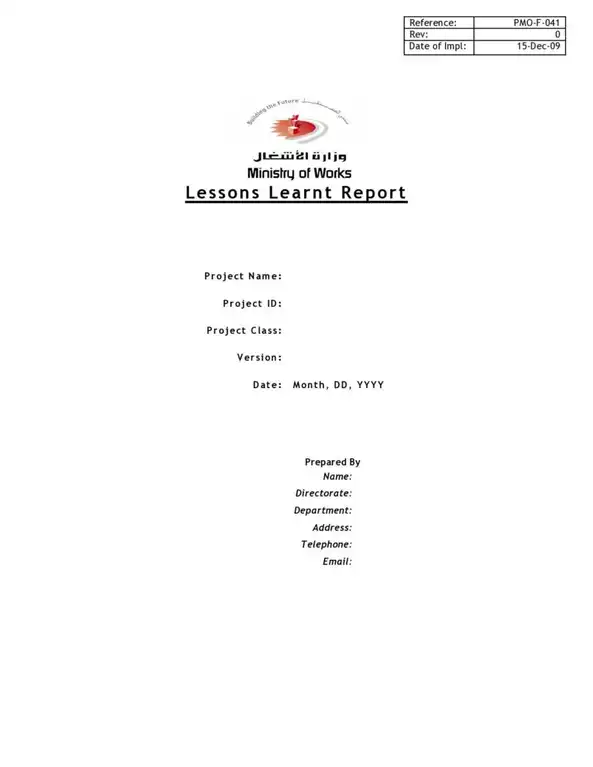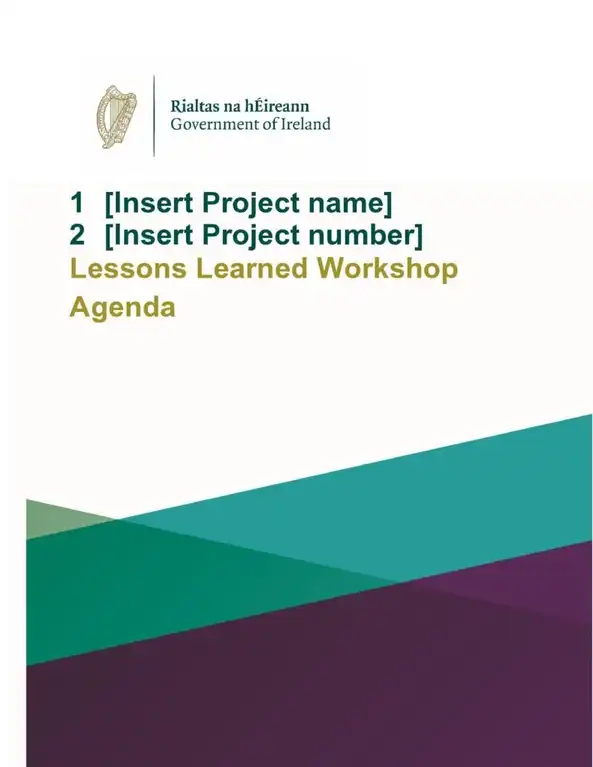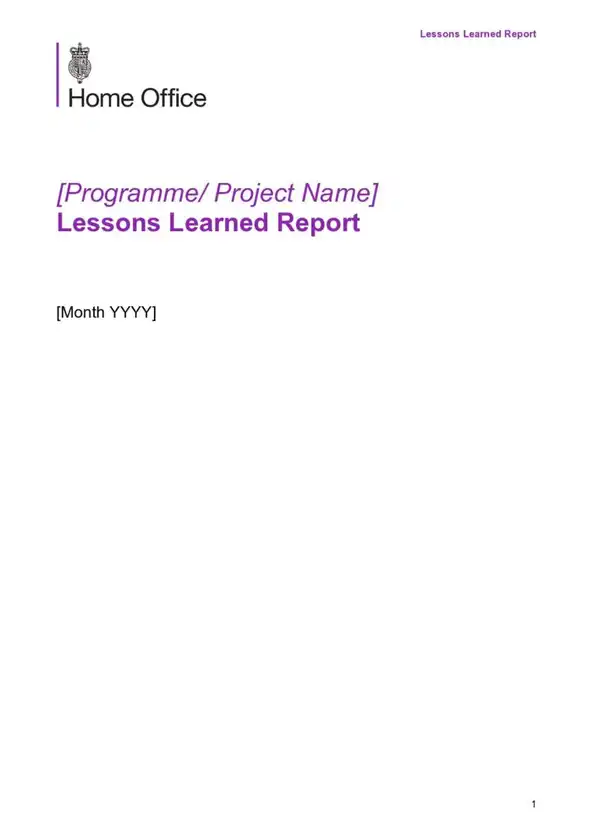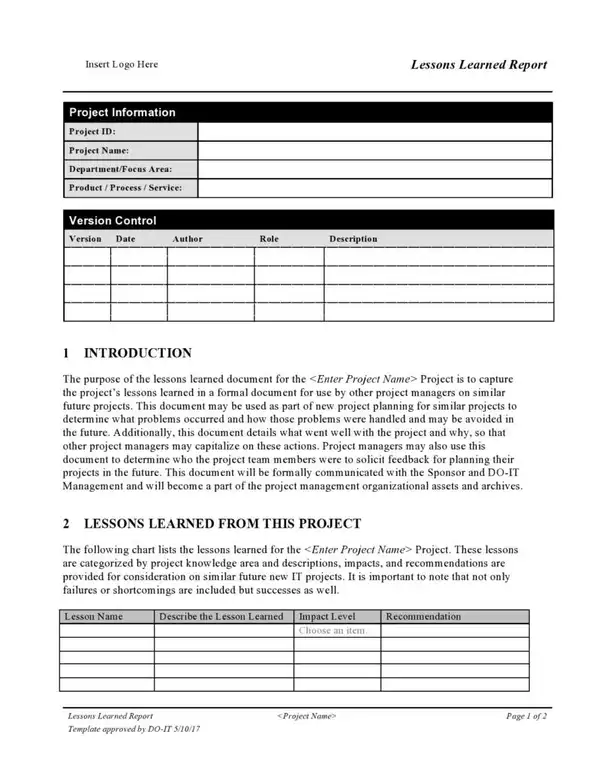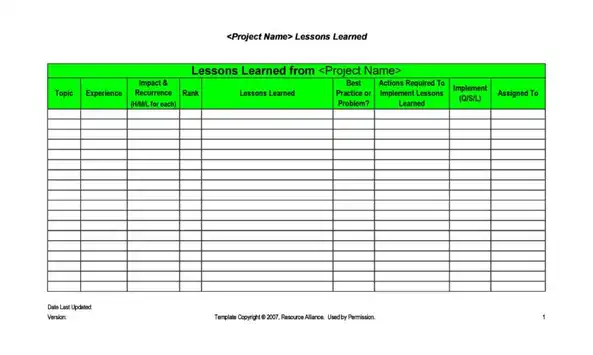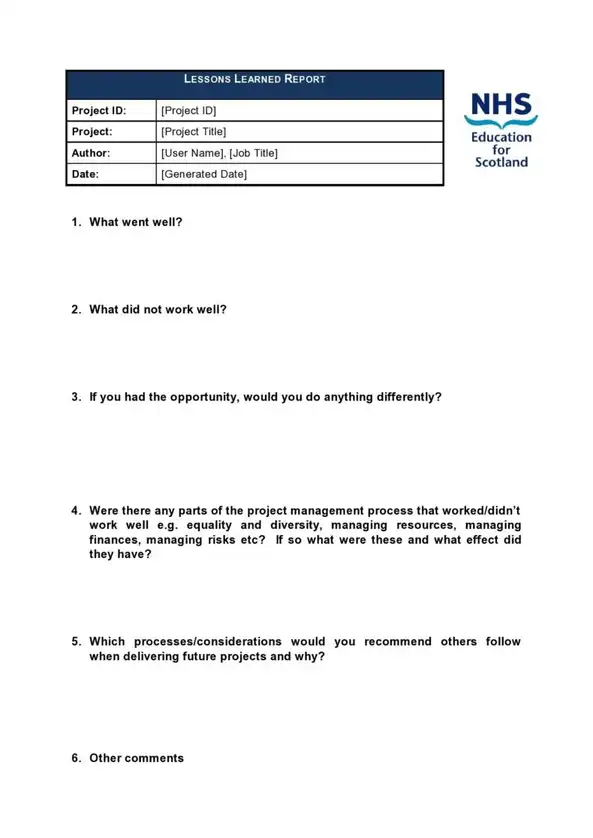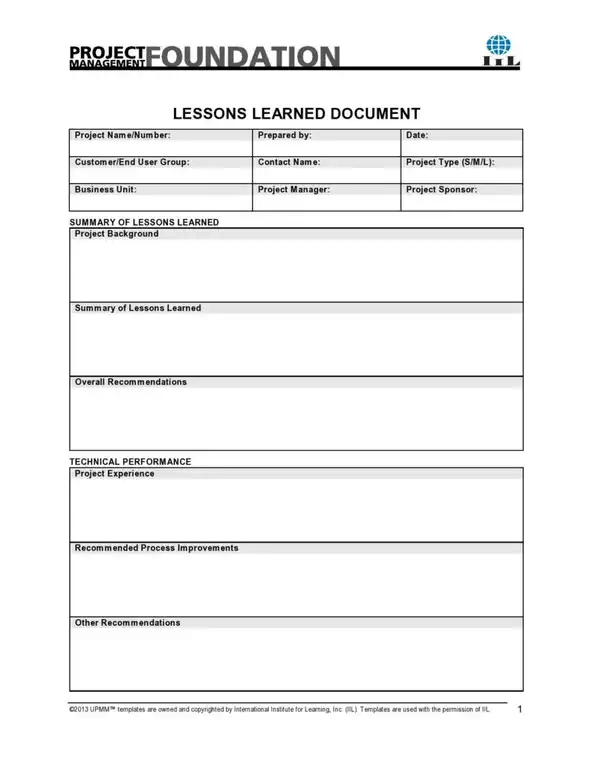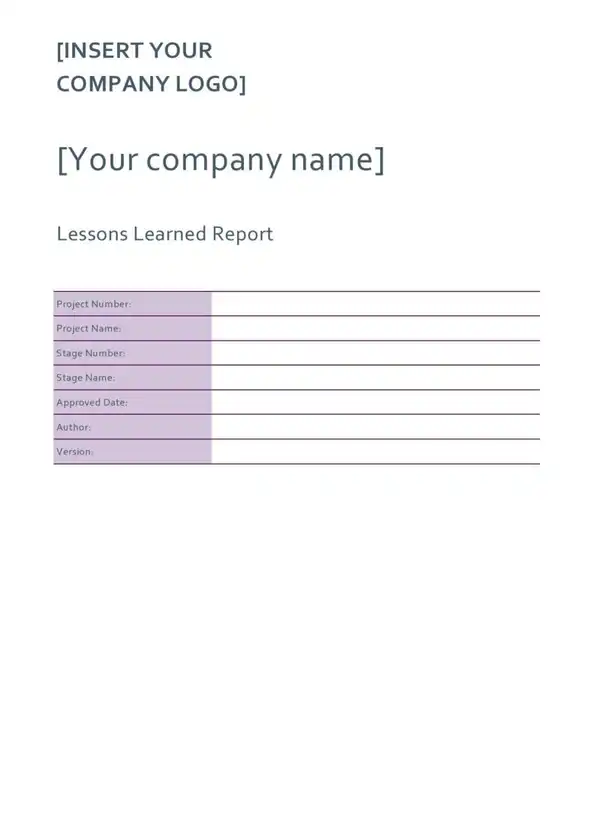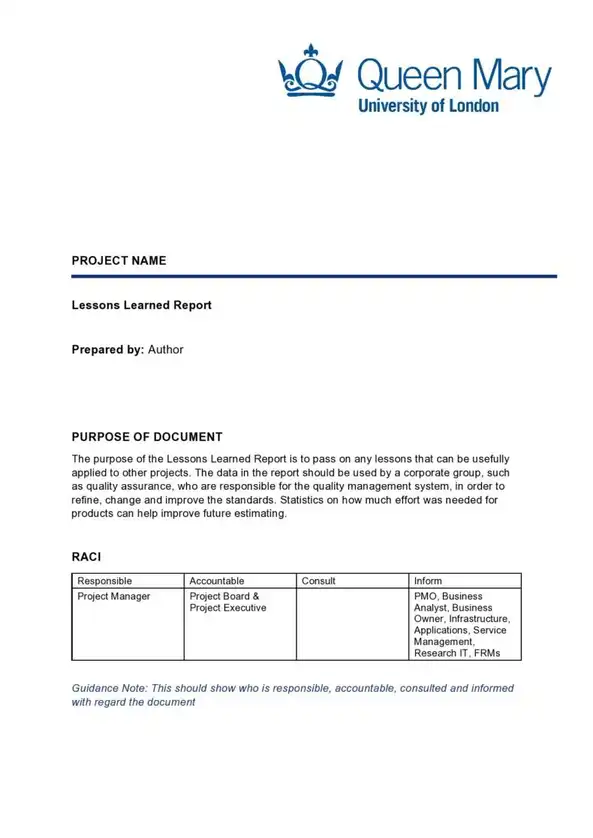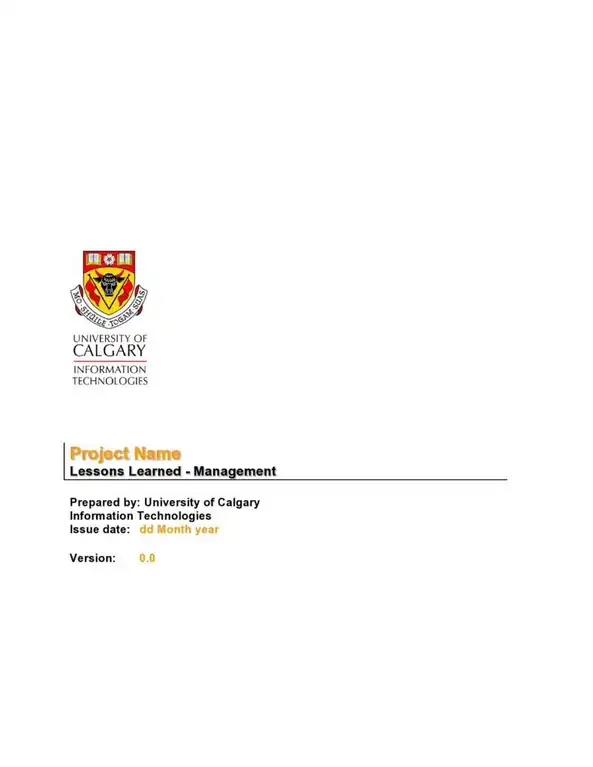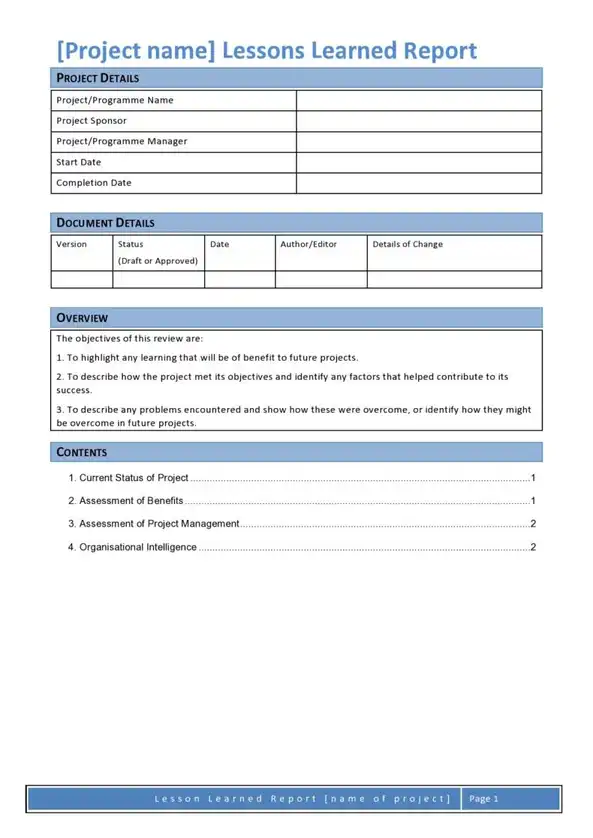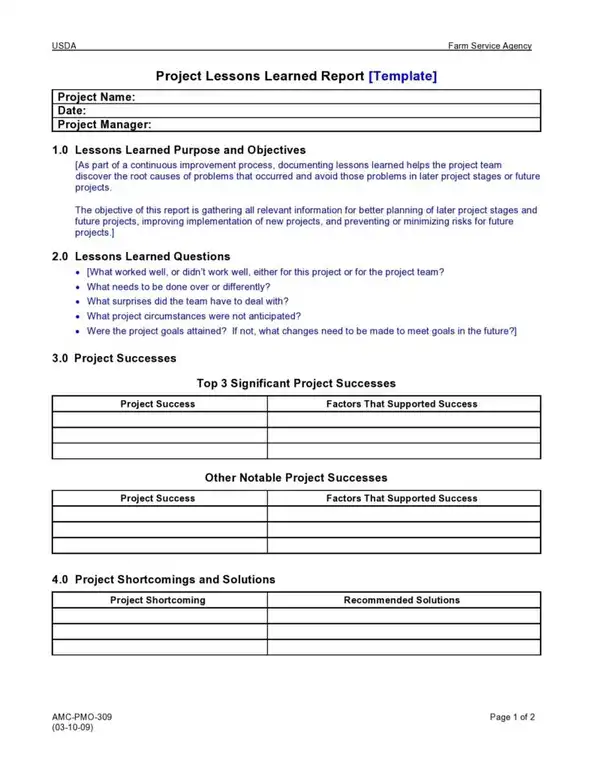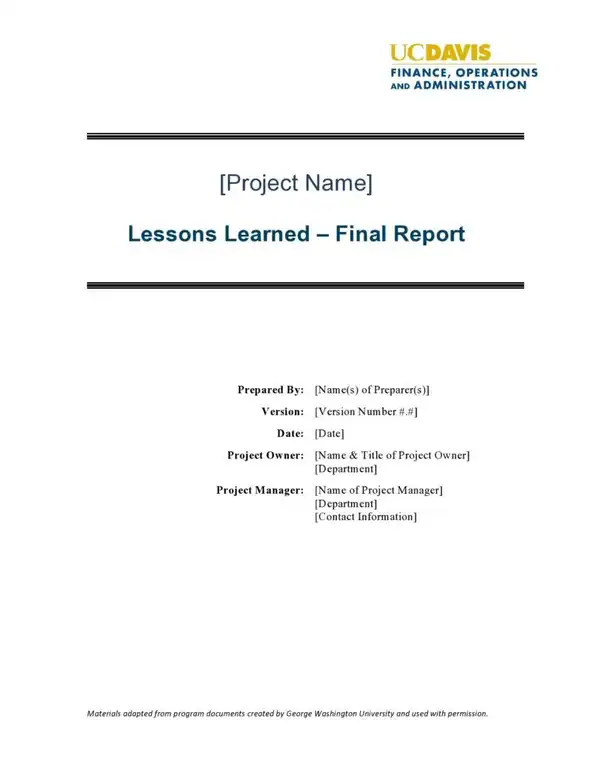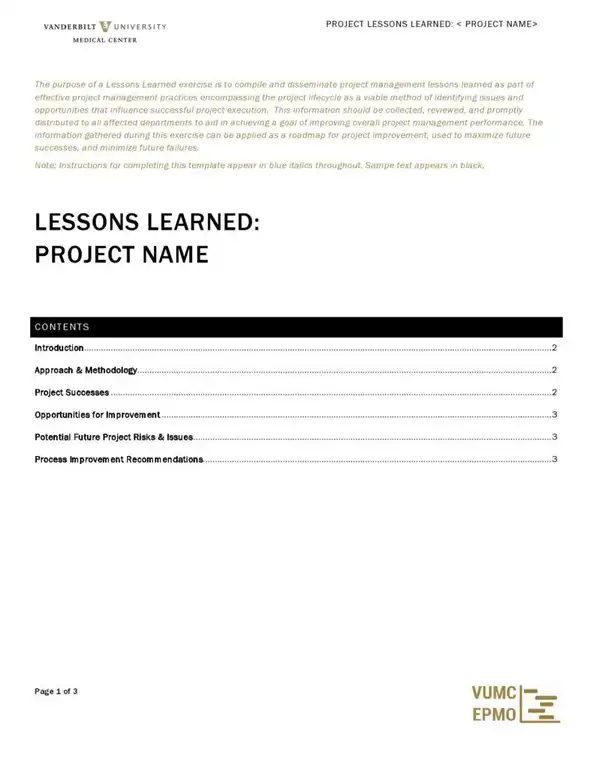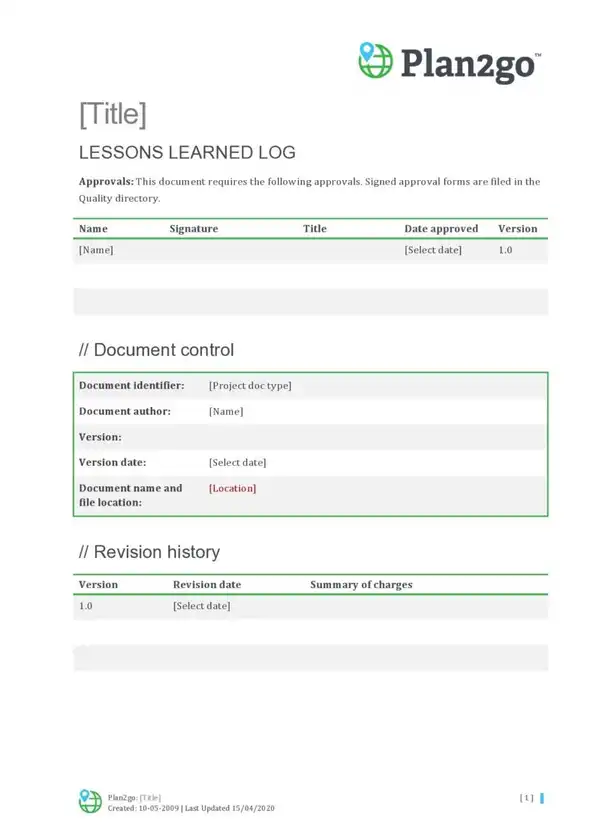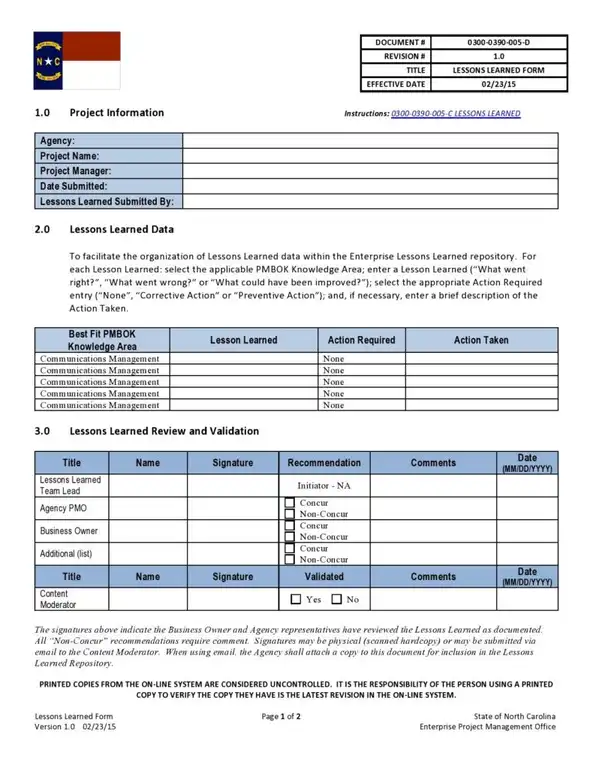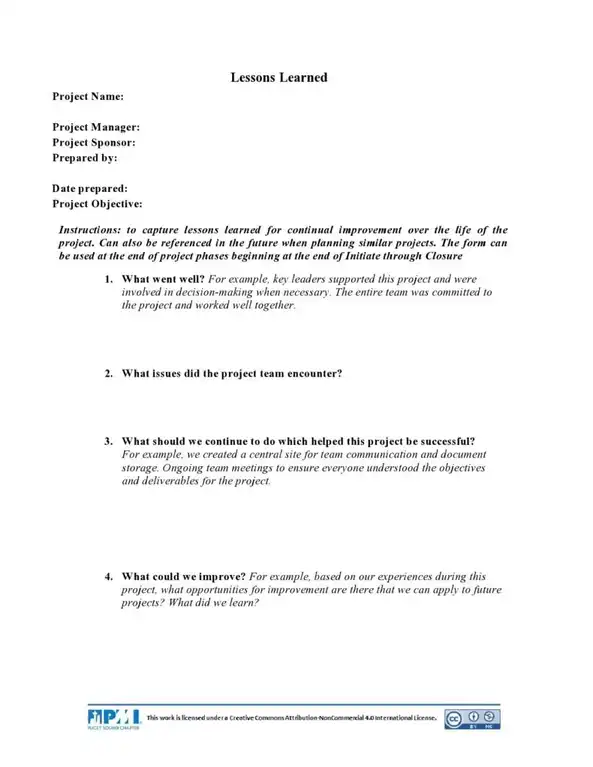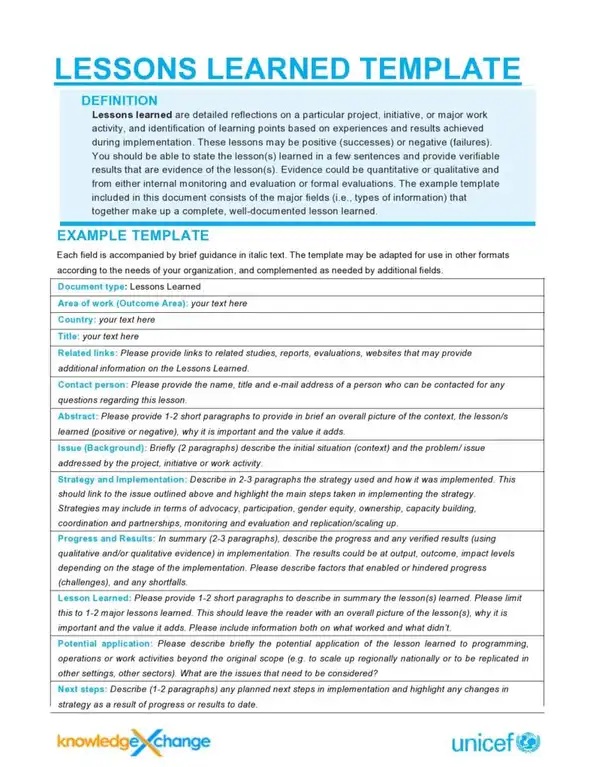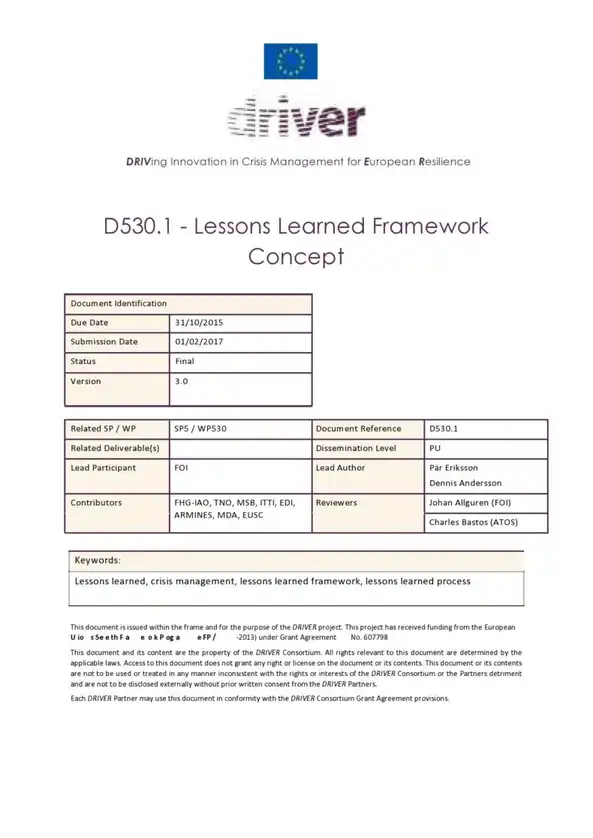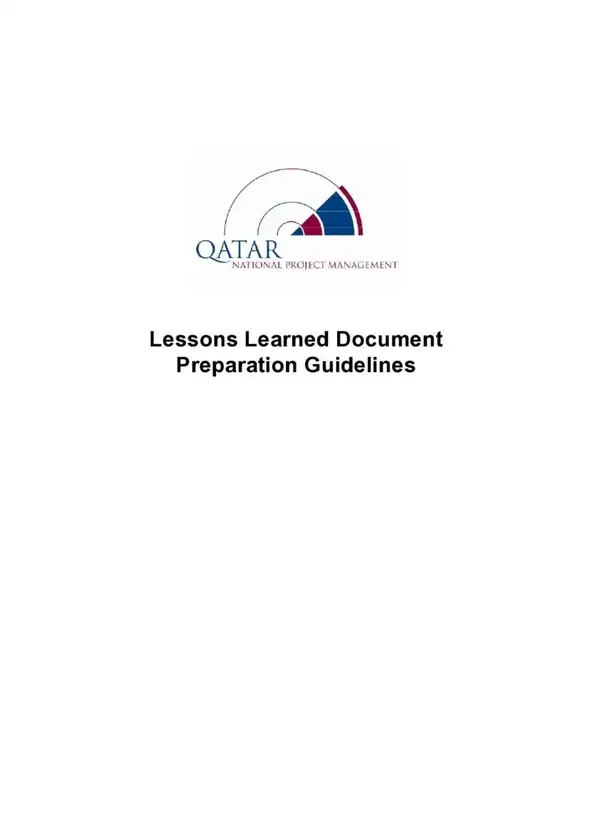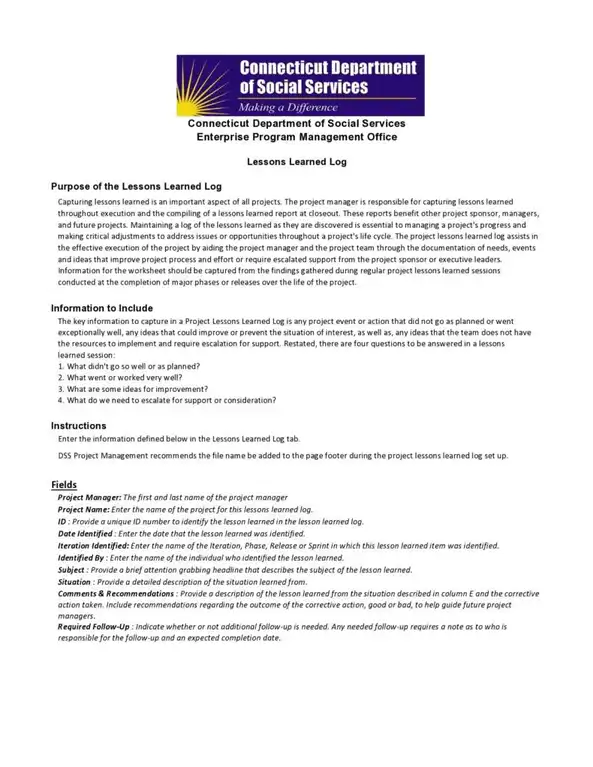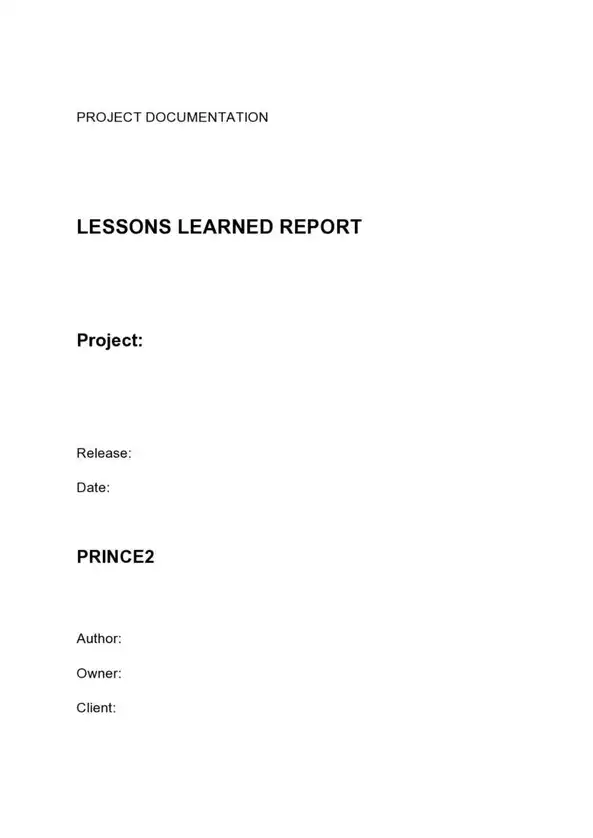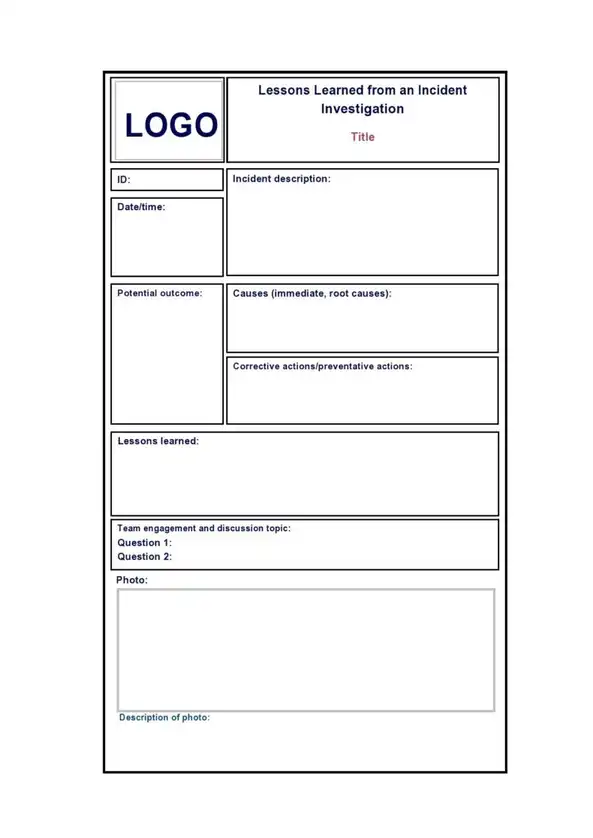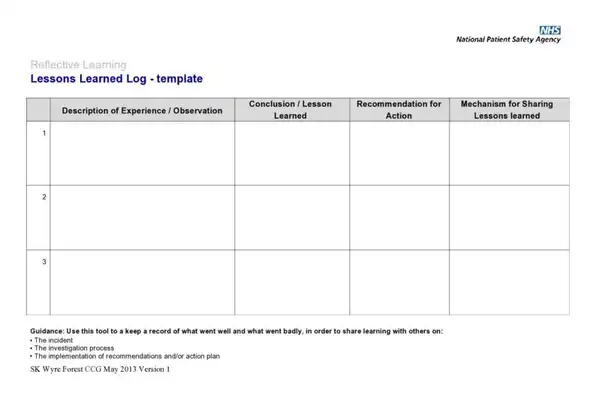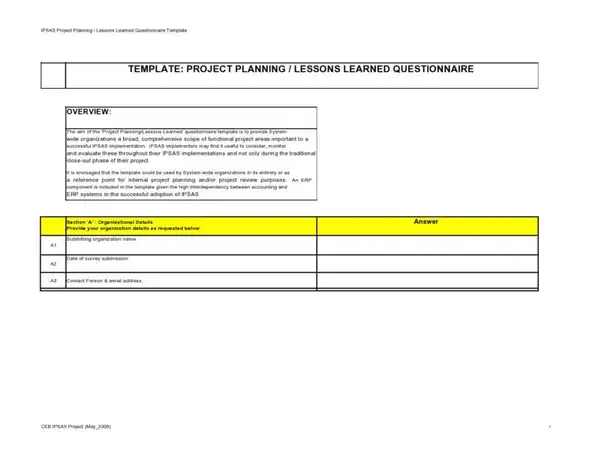What are the lessons learned? lessons learned are insights and knowledge gathered from reviewing past projects. This process isn’t just about noting down mistakes; it also involves recognizing what went well.
This way, every project teaches something valuable, helping the team grow and perform better in their next tasks. This practice is key to continuous improvement in project management.
Why Are Lessons Learned Important?
Here’s why they matter so much:
Improve Processes:
By looking at what worked and what didn’t in past projects, you can find better ways to do things.
Avoid Repeating Mistakes:
When you know what went wrong before, you can avoid making those same mistakes again.
Boost Team Skills:
Talking about what everyone learned helps the whole team get smarter and more skilled.
Save Time and Resources:
Not making the same mistakes means you save time and resources, making projects run smoother and more efficiently.
Strengthen Team Bonding:
Working through successes and challenges together can help your team work better together.
Using lessons learned ensures that your projects keep improving, helping your team succeed in future tasks.
Lessons Learned Examples
Components of a Lessons Learned
A good lessons learned template usually includes these parts:
- Project Details: Write down the project name, dates, and team members.
- Objectives: List what the project aimed to achieve.
- What Went Well: Talk about the parts of the project that were successful.
- Challenges: Discuss the problems faced and how they were handled.
- Lessons Learned: Write down the key lessons from both successes and challenges.
- Recommendations for Future Projects: Suggest how these lessons can be used in future work.
- Action Items: List specific steps to take based on the lessons learned.
This structure helps ensure that all important aspects of the project are reviewed and the key insights are captured effectively.
Who Should Be Involved in Filling Out?
When it comes to filling out, it’s important to include a variety of people who were involved in the project. Here’s who should join in:
- Project Team Members: Everyone who worked on the project should help fill out the template.
- Project Manager: The project leader needs to be involved because they understand the big picture and the details of what happened.
- Stakeholders: These are the people who care about the project’s outcome. They can be from inside or outside your company and offer a different view of the project’s success and areas for improvement.
- Support Staff: Sometimes, people who helped indirectly, like IT support or administrative assistants, can provide project insights into what could make the project run smoother.
You ensure that all perspectives are captured, which helps create a more complete and useful lessons-learned document. This can lead to better decisions in future projects.
How Do You Structure a Lessons Learned Session?
To have a successful lessons learned session, follow these simple steps:
- Prepare: Before the meeting, let everyone know they will be sharing their thoughts.
- Gather the Right People: Make sure all key team members are present, including anyone who worked on the project.
- Use a Template: Have a lessons learned template ready.
- Discuss Openly: Let everyone share their experiences. Talk about what worked well and what could be improved.
- Write It Down: Make sure someone writes down all the important points. This record is very helpful for future projects.
- Plan for Action: Decide what actions will be taken based on the lessons learned.
- Follow-up: After the session, share the notes with the team and check on the progress of the action items.
Lessons Learned Formats
How Can We Ensure that the Lessons Learned Are Applied to Future Projects?
To make sure lessons learned are used in future projects, you can:
Include Lessons in New Project Plans:
When planning a new project, look at the lessons from past projects.
Review Lessons Regularly:
Have regular meetings to look at old lessons and see if they fit with new projects.
Assign Responsibility:
Make someone responsible for making sure lessons are considered in project planning.
Train Your Team:
Teach new team members about past lessons so they understand how to avoid past mistakes.
Update Your Lessons:
Keep updating your lessons as projects go on so they stay relevant.
Difference Between Lessons Learned and a Post-Mortem?
Lessons learned and Post-Mortem meetings both review past projects, but they are used differently:
- Lessons Learned: This is done throughout the project and after it ends. It focuses on understanding both good and bad outcomes to improve continuously.
- Post-Mortem: This usually happens only after the project is completed. It is a deep dive into what went wrong, mainly focusing on understanding failures to avoid them in the future.
While both are useful, lessons learned are about ongoing improvement and apply both during and after the project, whereas a post-mortem is more about reflection after the fact.
Lessons Learned Template
Why Use a Template?
Using a lessons learned template is very helpful in project management. It lets you look back at what happened in a project so you can learn from it. Here’s why it’s so important:
- Remember Important Details: The template helps you remember both the good things and the mistakes. This way, you can do better next time.
- Improve Future Projects: By understanding what went well and what didn’t, you can make changes to improve your next projects.
- Share Knowledge: It allows you to share what you’ve learned with other people on your team or even in your whole company. This improves everyone’s job performance.
- Save Time and Money: Learning from past projects can save you time and money by allowing you to avoid making the same mistakes again.
- Build a Stronger Team: When your team sees that you’re learning from each project, it can make them feel more confident and involved.
Using a Lessons Learned Template is a smart way to make sure that every project you do helps you and your team to keep getting better.
When Should It Be Filled Out?
It’s best to fill out the lessons learned template at specific times to get the most out of it:
- During Major Milestones: Halfway through or at major stages of the project, take time to reflect on what’s happening and write it down.
- At Project Completion: When the project ends, gather everyone to discuss the overall experience.
- After Project Changes: If big changes happen, like a new team member joining or a major shift in direction, it’s a good time to assess and document the impact.
Filling out the template at these times helps keep track of lessons when they are fresh in everyone’s mind.
How to Use the Lessons Learned Template Effectively
Here are some simple steps to make sure you use the template well:
- Set Regular Meetings: Make a plan to fill out the lessons learned template at important times during the project, like after finishing a big part or at the end. This makes sure you remember important details.
- Get Everyone Involved: Everyone on the team must help fill out the template. Different people see things differently, so everyone’s thoughts are valuable.
- Write Everything Down: When using the template, write down all the details. This helps you remember what happened and why it matters.
- Keep the Template Updated: Review your completed templates once in a while to see if you can learn something new or update something old. This keeps the information useful and fresh.
- Use Simple Language: Write in a way that everyone can understand. This will help everyone understand the lessons and how to use them.
How Should the Information in a Lessons Learned Template Be Stored?
Storing the information correctly is important for keeping it useful and accessible. Here’s the best way to do it:
- Use Digital Formats: Save your lessons learned documents on a computer or online. This makes it easy to search for and find information when you need it.
- Keep It Secure: Make sure the information is safe. Use passwords and backups to protect the documents.
- Organize Well: Arrange the lessons in a way that makes sense. You might sort them by project name, date, or type of lesson. This helps you find them quickly.
- Make It Accessible: Allow team members who need the information to get it easily. Use shared drives or online tools where everyone can access the documents.
- Update Regularly: If new information comes up, add it to the existing documents. Keep your lessons up-to-date.
By storing your lessons learned in a secure, organized, and accessible way, you ensure that they remain valuable tools for improving future projects.
Lessons Learned Report
How to Share Lessons Learned?
Sharing lessons learned effectively is key to improving future projects. Here’s how to communicate your findings to different groups within the organization:
For Stakeholders: Stakeholders need to see the big picture of a project. Create reports for them that include the following:
- How the project aligns with broader industry goals.
- Financial aspects like budget use and profit margins.
- Long-term outcomes and deadlines. These reports help stakeholders understand the strategic value and financial impact of the project.
For Team Members: Team members need details about day-to-day operations. Provide them with a report that focuses on:
- Deadlines, both met and missed.
- Team dynamics, including how well everyone communicated and worked together.
- Overall project performance and individual achievements. This detailed feedback helps team members learn from the experience and recognize their contributions.
Storing Reports:
- Keep all reports in a central repository that’s easy to access, like a shared drive or cloud storage. This makes it possible for anyone in the company to review the lessons when needed.
General Overview for Broader Distribution:
- Summarize the key lessons learned in a simple overview. Share this with a larger audience through email or a workplace newsletter. This ensures that everyone in the organization benefits from the knowledge gained, even if they are not directly involved in the project.
By tailoring the communication of lessons learned to different audiences and ensuring easy access to these reports, you can maximize the impact of the insights gained from every project.
Lessons Learned in Project Management
In project management, It refers to the valuable insights and knowledge gathered from the experiences of a project.
These lessons are usually discussed after a project ends during a special meeting with important team members from both the customer’s and the contractor’s sides.
Here’s how these meetings typically work and why they’re helpful:
- Gathering Everyone Together: The meeting brings together all key people involved in the project. This includes team members from your company and representatives from the customer and contractor sides.
- Sharing and Discussing: During the meeting, everyone shares their views on the project. They talk about what parts of the project went well and what could be better.
- Organized Discussion: To make the meeting more useful, it’s organized into parts. People discuss what they liked, what challenges they faced, what they learned, and what they would change for next time.
- Learning from Each Other: This is a chance for everyone to learn from each other’s experiences. It helps the whole team understand different perspectives and gather useful insights.
- Planning Improvements: The main goal is to figure out how to do better in future projects. The lessons learned are used to make plans that help avoid past mistakes and repeat successes.
These lessons learned help teams reflect on their experiences and use that knowledge to improve future work. This process makes your projects more efficient and successful over time.
What Is a Lessons Learned Document?
A Lessons-Learned Document is a detailed record that captures what worked well and what didn’t in a project. It shows a company’s strong commitment to project management and offers project managers a chance to learn from actual experiences. However, how organizations use these lessons can vary greatly.
Some organizations might not write down lessons regularly because they need a specific system for it. Others might note these lessons at the end of a project but not use them later. The best method is to document these lessons and review them before starting new projects. Analyzing these lessons to find common patterns helps improve future projects.
How to Document Lessons Learned?
To document lessons learned effectively, you can follow these steps:
- Record the Lessons: After discussing what happened in a project, write down all key points, including both successes and failures. Include any extra comments from team members who couldn’t attend the meeting.
- Create Detailed Reports: Make a thorough report that has all the details from your discussion. Share this report with everyone involved to make sure it’s correct.
- Distribute to the Team: Once the report is complete, give it to the whole project team, including those who weren’t in the lessons learned meeting. This helps everyone understand and learn for future projects.
- Prepare a Summary for Leadership: Write a shorter report for the project leaders. This should overview the lessons learned process, point out what was good and what wasn’t, and suggest changes for future projects. Add more details or attachments if needed.
- Store Reports Properly: Make sure to keep the final reports with other project files where they can be easily found.
MidProject Survey Lessons Learned
Running a survey in the middle of a project can give early insights into its progress. Make sure all survey participants have seen all the project details up to that point so they can answer questions knowing the full context.
Collect and look at these answers, even if they are anonymous, to see if the project meets the expectations of your target market. This feedback can help you make needed changes to the project as it progresses.
Sample lessons learned template
here are some of the sample lessons learned template:
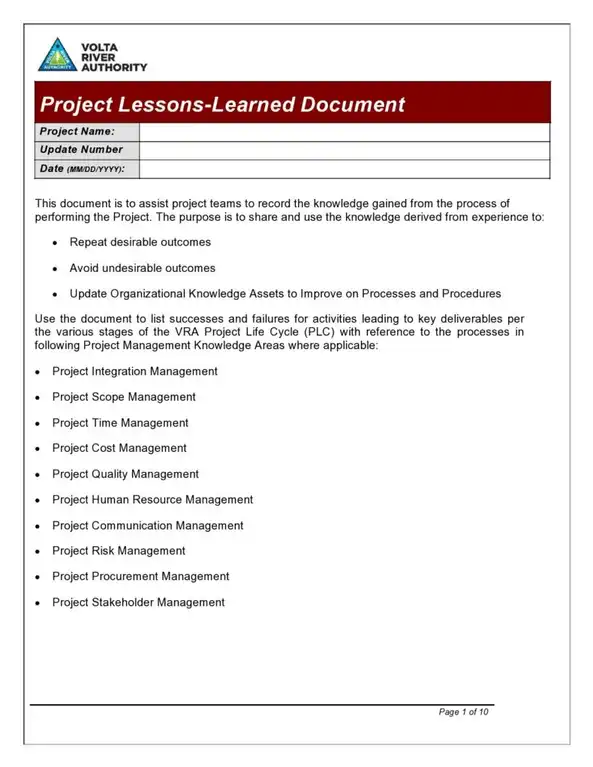
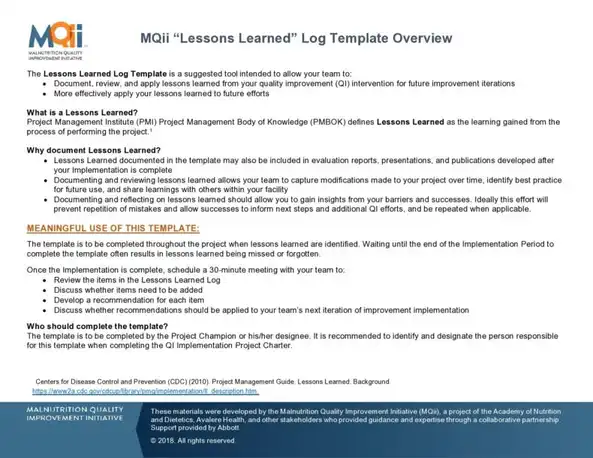
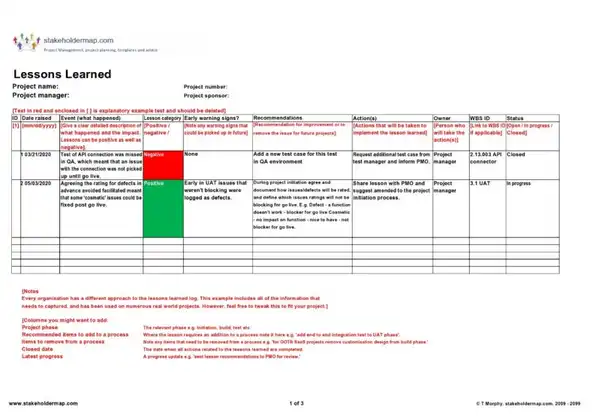


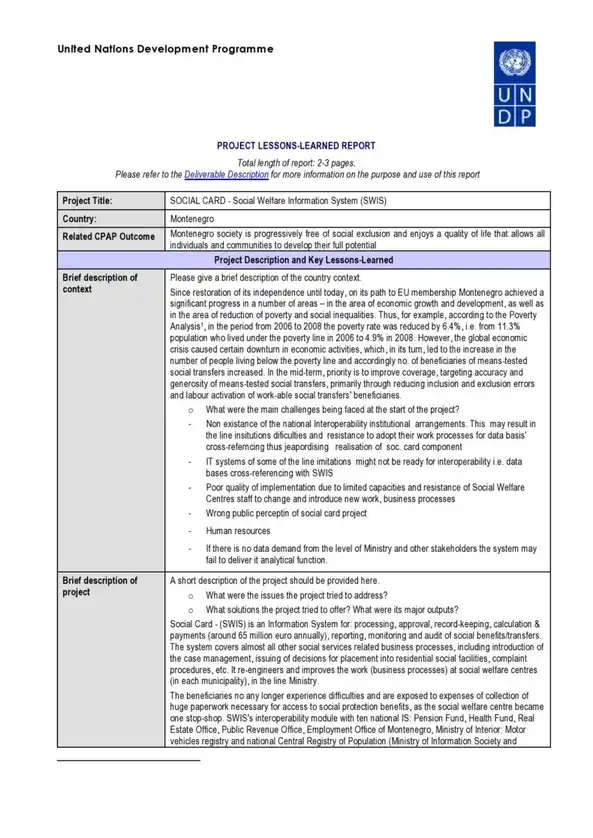
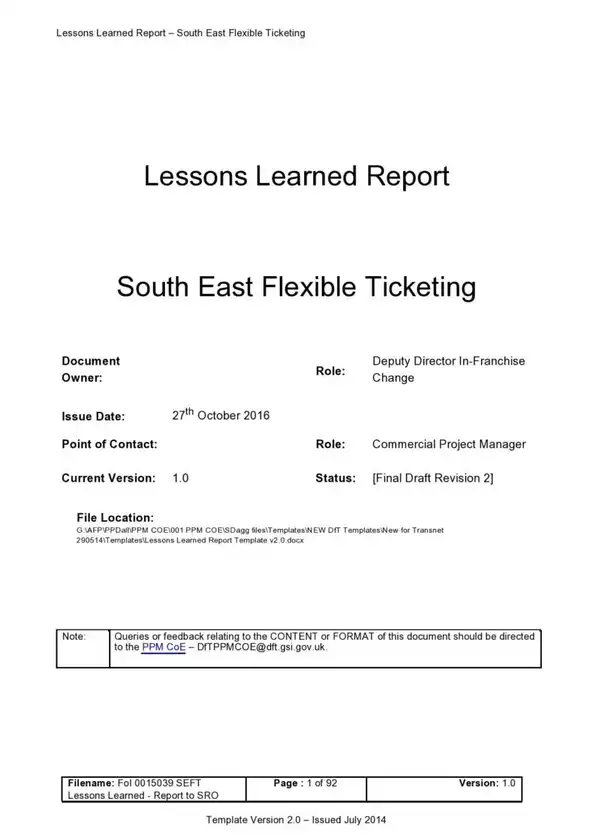
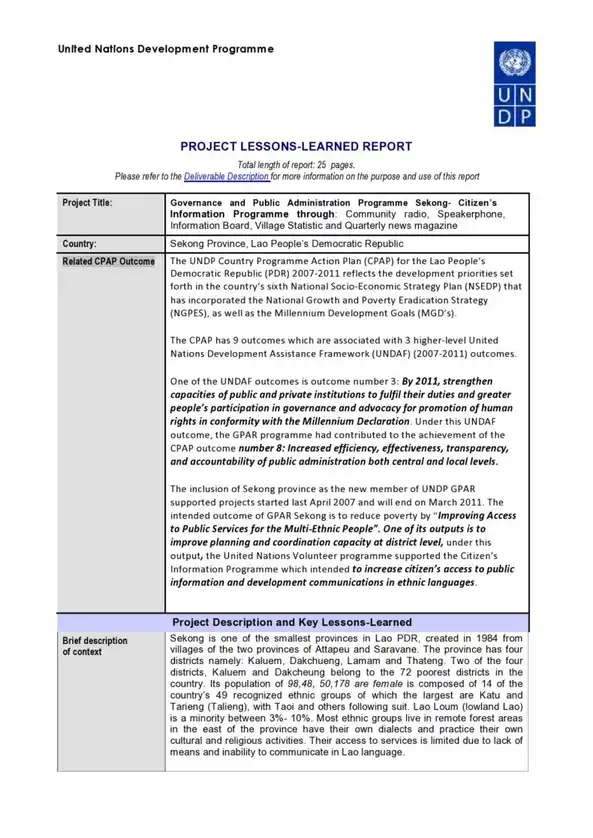
Common Mistakes and How to Avoid Them
When using a Lessons Learned Template, there are a few mistakes that teams often make:
- Not Involving Everyone: Make sure all team members contribute. You need to include all of the perspectives to complete insights.
- Skipping Sessions: It might seem tempting to skip lessons learned sessions when deadlines are tight, but consistently documenting these lessons is crucial for long-term success.
- Being Too Vague: Be specific about what went well and what didn’t. Specific details help in making effective changes.
- Not Following Up: It’s not enough to just write things down. Revisit and use the lessons in planning to ensure they impact future projects.
- Ignoring Positive Lessons: Focus on successes just as much as failures. Replicating what works is as important as fixing what doesn’t.
Avoiding these mistakes can enhance the effectiveness of your lessons-learned process, ensuring valuable insights are captured and utilized effectively.
Using a sample lessons learned template is a great way to help your projects succeed in the future. It’s not just a routine; it’s a way to strengthen and smarten your team.
This template helps you collect important lessons from every project. These lessons become a treasure of knowledge that improves your team’s handling of new challenges.
Start using this lessons-learned template today. It will help your team use what they’ve learned to do even better in all your future projects. This is a smart move for any team that wants to grow and improve.

The content creator team at calipsotree.com is dedicated to making topics accessible to everyone, with over 9 years of experience in writing and breaking down complex concepts into easy-to-understand articles that answer readers’ financial questions.






